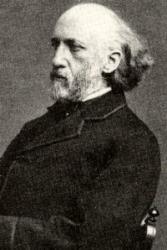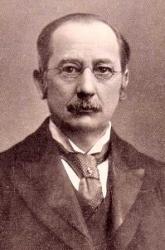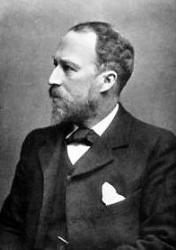Planning worship?
Check out our sister site, ZeteoSearch.org,
for 20+ additional resources related to your search.
- |
User Links
Person Results
Henry Hart Milman

1791 - 1868 Person Name: Milman Author of "Brother, thou art gone before us" in Plymouth Collection of Hymns and Tunes; for the use of Christian Congregations Milman, Henry Hart, D.D., the youngest son of Sir Francis Milman (who received his Baronetage as an eminent Court physician), was born Feb. 10th, 1791, and educated at Dr. Burney's at Greenwich, and subsequently at Eton. His career at B. N. C. Oxford, was brilliant. He took a first class in classics, and carried off the Newdigate, Latin Verse, Latin Essay, and English Essay. His Newdigate on the Apollo Belvedere, 1812, is styled by Dean Stanley "the most perfect of Oxford prize poems." His literary career for several years promised to be poetical. His tragedy Fazio was played at Covent Garden, Miss O'Neill acting Bianca. Samor was written in the year of his appointment to St. Mary's, Reading (1817); The Fall of Jerusalem (1820); Belshazzar and The Martyr of Antioch (1822), and Anne Boleyn, gained a brilliant reception from the reviewers and the public. He was appointed Poetry Professor at Oxford in 1821, and was succeeded ten years after by Keble. It must have been before 1823, the date of Heber's consecration to Calcutta, that the 13 hymns he contributed to Heber's Hymns were composed. But his poetry was only the prelude to his larger work.
The Bampton Lectures (1827) mark his transition to theological study, and the future direction of it was permanently fixed by his History of the Jews (1829). This book raised a storm of obloquy. It was denounced from the University pulpit, and in the British Critic. "It was the first decisive inroad of German theology into England, the first palpable indication that the Bible could be studied like another book, that the characters and events of the sacred history could be treated at once critically and reverently" (Dean Stanley).
In 1835 he was presented by Sir Robert Peel to a Canonry at Westminster and the Rectory of St. Margaret's. In 1839 appeared his valuable edition of Gibbon's Decline and Fall; and in 1840 his History of Christianity to the Abolition of Paganism in the Roman Empire. Among his minor works in a different field were his Life of Keats and his edition and Life of Horace. It was not till 1854 that his greatest work—-for "vast and varied learning, indefatigable industry, calm impartiality, and subtle and acute criticism, among the most memorable in our language" (Quart Rev.)—-Latin Christianity—-appeared. He had been appointed Dean of St. Paul's in 1849. The great services under the dome originated in his tenure of the Deanery. His latest work, published after his death, Sept. 24, 1868, was The Annals of St. Paul’s. Though one of the most illustrious in the school of English liberal theology, he had no sympathy with the extreme speculations of Germany. The "criticism" of Tübingen "will rarely bear criticism." He "should like an Ewald to criticise Ewald." "Christianity will survive the criticism of Dr. Strauss," and the "bright flashing artillery" of Rénan. His historical style has been compared to Gibbon in its use of epigram and antithesis. His narrative is full of rapidity of movement. His long complex paragraphs have often a splendour of imagination as well as wealth of thought. All the varied powers of his mind found vent in his conversation; he was called, after his death, "the last of the great converters." The catalogue of his friends from the days of Heber, "his early friend," to those of Hallam, Macaulay, and Dean Stanley, was long and distinguished.
Milman's 13 hymns were published in Heber's posthumous Hymns in 1827, and subsequently in his own Selection of Psalms & Hymns, 1837. The fine hymn for The Burial of the Dead, in Thring's Collection, "Brother, thou art gone before us," is from The Martyr of Antioch (1822). Like Heber's, they aim at higher literary expression and lyric grace. He makes free use of refrains. The structure is often excellent. His style is less florid and fuller of burning, sometimes lurid force than Heber's. His hymn for the 16th Sunday after Trinity, "When our heads are bowed with woe," has no peer in its presentation of Christ's human sympathy; the hymn for the 2nd Sunday in Lent, “Oh! help us, Lord! each hour of need," is a piece of pure deep devotion. "Ride on, ride on in majesty," the hymn for Palm Sunday, is one of our best hymns. And the stanzas for Good Friday, "Bound upon the accursed tree," form one of the finest meditations on the Passion. All his hymns are still in common use. [Rev.H.Leigh Bennett, M.A.]
--John Julian, Dictionary of Hymnology (1907)
Henry Hart Milman
Charles Beecher

1815 - 1900 Arranger of "MOYLE" in The Cyber Hymnal Beecher, Charles, son of the well-known Dr. Lyman Beecher, whose autobiography he chiefly edited, and brother of Henry Ward Beecher, was born at Litchfield, Connecticut, 1815. Mr. Beecher was for some time a Congregational pastor at Georgetown, Mass. He has published Review of Spiritual Manifestations, 1853; Pen Pictures of the Bible, 1855, &c. His hymns were contributed to his brother's Plymouth Collection, 1855, and include:—
1. There's rest in the grave. Heaven.
2. We are on our journey home. Heaven.
The latter is in the more extensive use, but both are unknown to the English collections. [Rev. F. M. Bird, M.A.]
-- John Julian, Dictionary of Hymnology (1907)
Charles Beecher
Frederick Bridge

1844 - 1924 Person Name: J. F. Bridge Composer of "ARGYLE" in The Westminster Abbey Hymn-Book Sir John Frederick Bridge CVO (5 December 1844 – 18 March 1924) was an English organist, composer, teacher and writer.
From a musical family, Bridge became a church organist before he was 20, and he achieved his ambition to become a cathedral organist by the age of 24, at Manchester Cathedral. After six years there, he was invited to become organist at Westminster Abbey, where he remained for the rest of his career. He instituted several changes to modernise and improve the music-making at the Abbey and organised the music for several state occasions, including two coronations.
As a teacher and lecturer, Bridge held posts at the Royal College of Music, Gresham College and the University of London. His students included the composers Arthur Benjamin and Noel Gay, the organists Edward Bairstow and Herbert Brewer, the conductor Landon Ronald and the early music pioneer Arnold Dolmetsch. His public lectures at Gresham College attracted large audiences, and they covered a wide range of subjects and musical periods.
For 25 years, Bridge was conductor of the Royal Choral Society, with whom he performed many new works, including some of his own compositions and works by the British composers Elgar, Vaughan Williams and Parry.
Bridge was born in Oldbury, then in Worcestershire, in central England, the eldest son of John Bridge and his wife, Rebecca née Cox. In 1850, his father was appointed a vicar-choral of Rochester Cathedral. Young Bridge was admitted to the cathedral choir as a "practising boy" (that is, a probationer). The choirboys were educated by another of the vicars-choral. The régime was severe in discipline and rudimentary in curriculum, but among the alumni of the choir school of this period were future organists of four English cathedrals and of Westminster Abbey. They included Bridge's younger brother Joseph, who eventually became organist of Chester Cathedral.
Bridge's first participated in a great national commemoration in 1852, when, aged eight, he was allowed to help toll the cathedral bell to mark the death of the Duke of Wellington. When Bridge was nine, he and his father were members of the choir assembled by Michael Costa for the opening of the Crystal Palace in June 1854. At the age of 14 Bridge left the cathedral choir and was apprenticed to John Hopkins, organist of Rochester Cathedral. While still studying under Hopkins, Bridge was appointed organist of the village church of Shorne in 1851, and the following year moved to Strood Parish Church.[2] From 1863 to 1867 he studied composition with John Goss, professor of harmony at the Royal Academy of Music. Bridge said in 1897, "Very happy and improving lessons they were and it is impossible for me to over-estimate the value of the instruction given by that dear, simple-minded musician."
In 1865 Bridge was appointed organist of Holy Trinity Church, Windsor. There he was encouraged and influenced by George Job Elvey, organist of St. George's Chapel, Windsor, and made many friends including John Stainer and the young Hubert Parry. During his time at Windsor, Bridge passed the examination for the Fellowship of the Royal College of Organists, in 1867, and took his Bachelor of Music degree at the University of Oxford.
After four years at Windsor, Bridge achieved his ambition to become a cathedral organist, successfully competing for the post at Manchester Cathedral.[3] He spent six years there from 1869, with his brother Joseph as his assistant. While at Manchester, he took his Doctor of Music degree at Oxford in 1874, and was professor of harmony at Owens College from 1872.
Under Bridge's leadership musical standards of the cathedral were improved, and the unsatisfactory old organ was replaced. The state of the existing instrument was described by The Manchester Guardian as "not only discreditable to Churchmen, but especially objectionable when existing in the cathedral church of a wealthy diocese.". The churchwarden, William Houldsworth gave £5,000, and a magnificent new instrument was built by Hill and Sons of London.
In 1875 the organist and master of the choristers at Westminster Abbey, James Turle, retired. Bridge was invited to succeed him. As Turle was permitted to retain his former title in retirement, Bridge was formally "Permanent Deputy-Organist of Westminster Abbey" until Turle's death in 1882, but he was effectively in sole charge from the outset. The Musical Times wrote:
The appointment of Dr. Bridge to the post of organist at Westminster Abbey … will be welcomed by all interested in the cause of church music. The improvement in the services at Manchester Cathedral since Dr. Bridge has held the position of organist, may be regarded as a proof that in the responsible office which he has now accepted he will do his utmost to advance the character of the music in the Abbey; and we sincerely hope that the Dean and Chapter will allow him that unlimited power over the choir which may enable him to raise it to the high state of efficiency which the public has a right to expect.
To the general public, Bridge became known for organising the music, and composing some of it, for great state occasions, notably Queen Victoria's jubilee (1887), Edward VII's coronation (1902), the national memorial service for Edward VII (1910), George V's coronation (1911), and the reinauguration of Henry VII's Chapel as the chapel of the Order of the Bath (1913). In the musical world he was known for his special commemorations of English composers of the past. The first was a celebration of Henry Purcell in 1895, marking the bicentenary of Purcell's death. Bridge presented Purcell's Te Deum "purged of the 18th century accretions which had overlaid it". Later commemorations were of Orlando Gibbons (1907), and Samuel Sebastian Wesley (1910).
Having worked successfully to have the organ at Manchester replaced, Bridge found himself obliged to do the same at the Abbey. He described the instrument he inherited as "a very old-fashioned affair". In 1884 the organ was completely rebuilt by Hill and Son to a very high specification.
When the National Training School for Music was set up in 1876 under Arthur Sullivan, Bridge was appointed professor of organ. When the school was reconstituted as the Royal College of Music in 1883 he was appointed professor of harmony and counterpoint. In 1890 he was elected Gresham professor of music at Gresham College, London, and in 1903 he was appointed professor of music at the University of London. According to Guy Warrack and Christopher Kent in the Grove Dictionary of Music and Musicians, "accounts of his teaching are not complimentary", but he was generally regarded as a highly successful lecturer, and Alcock's Oxford Dictionary of National Biography article states, "Because of his persuasive style and apt illustrations, his lectures drew large audiences." His pupils at the Royal College and the Abbey included Edward Bairstow, Arthur Benjamin, Herbert Brewer, Arnold Dolmetsch, Noel Gay, Lloyd Powell and Landon Ronald.
Bridge's enthusiasms were many and varied. His lectures at Gresham College were well known for the wide range of topics he covered. His articles for the musical press showed a similar variety; some examples are: "Purcell and Nicola Matteis"; "Samuel Pepys – A Lover of Musicke"; "A Seventeenth Century View of Musical Education"; and "The Musical Cries of London in Shakespeare's Time". In 1899 he was a pioneer of authentic performance of Handel's score for Messiah, purging it of 18th and 19th century reorchestrations.
Bridge was the conductor of the Royal Choral Society from 1896 to 1921. In an article celebrating his work with the society, Herman Klein listed the new works that it had performed under Bridge's baton. They included six works by Elgar, four apiece by Parry, Stanford, and Samuel Coleridge-Taylor, and works by Alexander Mackenzie, Frederick Cowen, Hamilton Harty, Ethel Smyth and Vaughan Williams.
Bridge was married three times, first, in 1872, to Constance Ellen Moore (d. 1879); second, in 1883, to Helen Mary Flora Amphlett (d. 1906), and third, in 1914, to Marjory Wedgwood Wood (d. 1929). There were a son and a daughter of the first marriage, and a daughter of the second. Bridge was knighted in 1897, and created MVO in 1902 and CVO in 1911. He was awarded honorary degrees from the universities of Durham (1905) and Toronto (1908).
Bridge retired as organist of the Abbey in 1918, but was granted the title of "Organist Emeritus" and continued to live in the Little Cloisters until his death six years later at the age of 79. His funeral took place at Glass, Aberdeenshire, where he was buried on 21 March 1924.
--en.wikipedia.org/wiki/ (excerpts)
Frederick Bridge
Charles Harford Lloyd

1849 - 1919 Person Name: C. H. Lloyd, b. 1849 Composer of "CAMPO SANTO" in Church Hymns Born: October 16, 1849, Thornbury, Gloss, England.
Died: October 16, 1919, Slough, England.
Buried: Windsor Cemetery, Windsor, Berkshire, England.
Lloyd attended Thornbury Grammar School and Rossall School, and was a Scholar of Magdalen School, Hertford College, Oxford (BMus 1871, BA 1872, MA 175, DMus 1891). He served as organist at Gloucester Cathedral (1876); Christ Church, Oxford (1882, succeeding Samuel Wesley); precentor of Eton College (1892); organist of the Chapel Royal (1914); and editor of Church Hymns (1903).
Sources:
Frost, p. 680
Music:
Credo Domine
Lundy
Sacramentum Unitatis
Savile
St. Frideswide
http://www.hymntime.com/tch/bio/l/l/o/lloyd_ch.htm
Charles Harford Lloyd
Joseph Gelinek
1758 - 1825 Person Name: Gelineck Arranged from of "[Brother Thou Art Gone] (Dirge)" in The New York Choralist
Joseph Gelinek


 My Starred Hymns
My Starred Hymns


